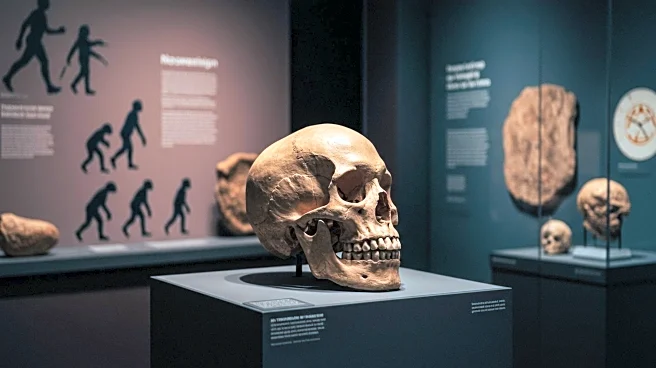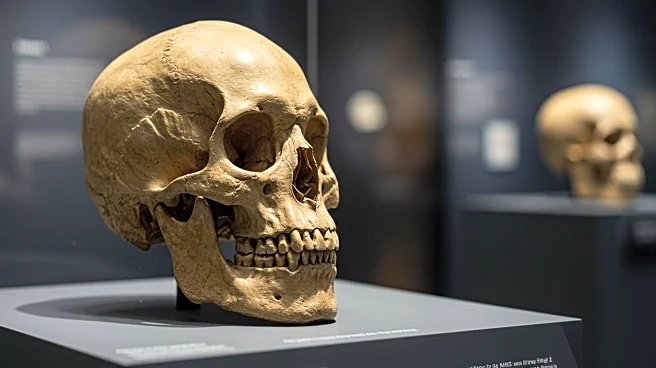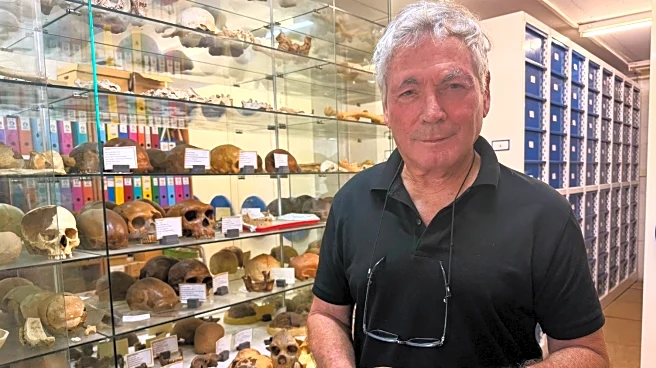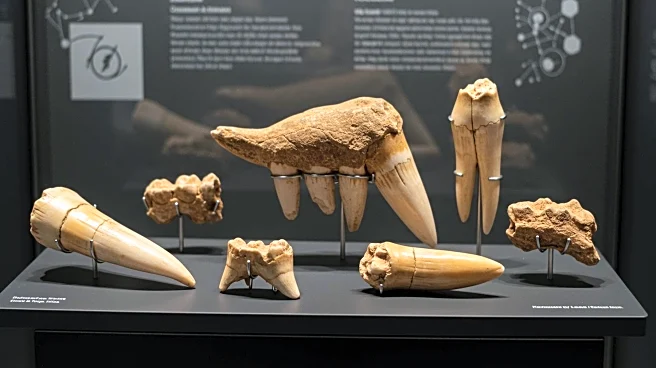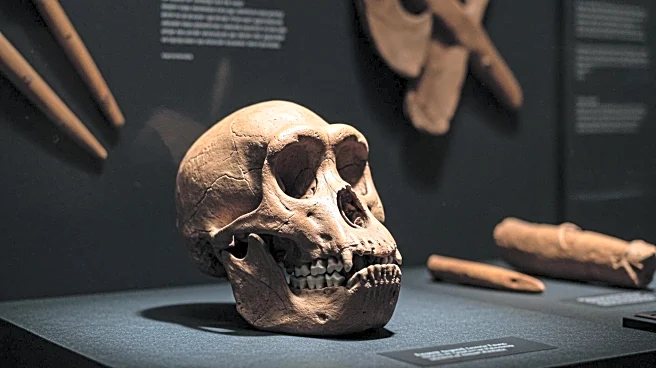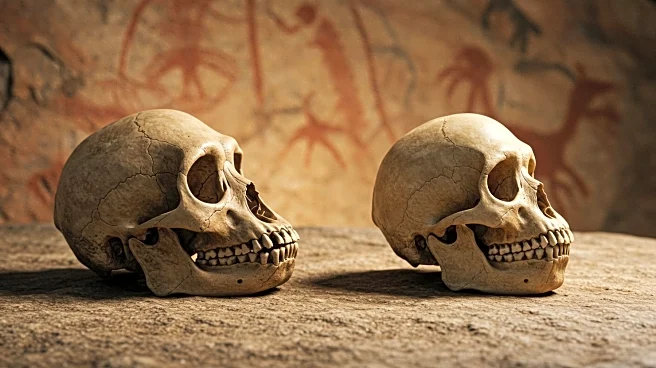What's Happening?
A study by the Institut de Paléontologie Humaine in France has dated a nearly complete cranium found in Petralona Cave, Greece, to at least 286,000 years old using advanced isotopic techniques. The skull, discovered in 1960, has puzzled scientists due to its ambiguous features, not clearly resembling Neanderthals or modern humans. The research employed uranium-series dating, which measures the decay of uranium isotopes into thorium, to determine the age of calcite deposits on the skull. The findings suggest the skull may date between 277,000 and 539,000 years ago, providing a more precise chronology than previously available.
Why It's Important?
The dating of the Petralona skull is significant as it holds a key position in understanding European human evolution. The skull's age suggests it may represent a primitive population that coexisted with early Neanderthal lineages during the Middle Pleistocene, a period of significant evolutionary change. This research contributes to the broader understanding of human ancestry and the evolutionary timeline, potentially impacting theories about human migration and adaptation in prehistoric Europe.
What's Next?
Further research may focus on the skull's morphological features to better understand its evolutionary context. Scientists may also explore other fossils in the region to corroborate the findings and refine the timeline of human evolution in Europe. The study opens avenues for interdisciplinary collaboration to explore the implications of these findings on human history.
Beyond the Headlines
The study highlights the challenges in assigning specific ancestor groups to fossils due to overlapping features and evolutionary complexities. It underscores the importance of advanced dating techniques in paleontology and the need for continuous exploration to unravel human evolutionary history.
